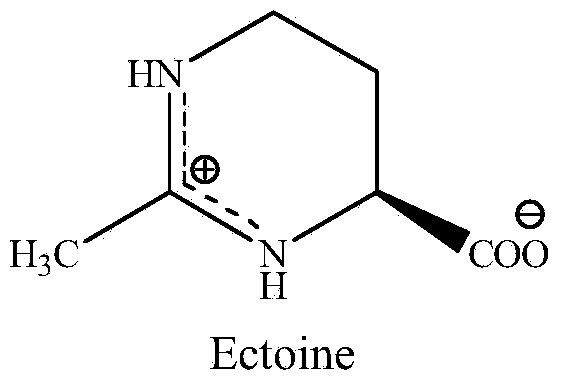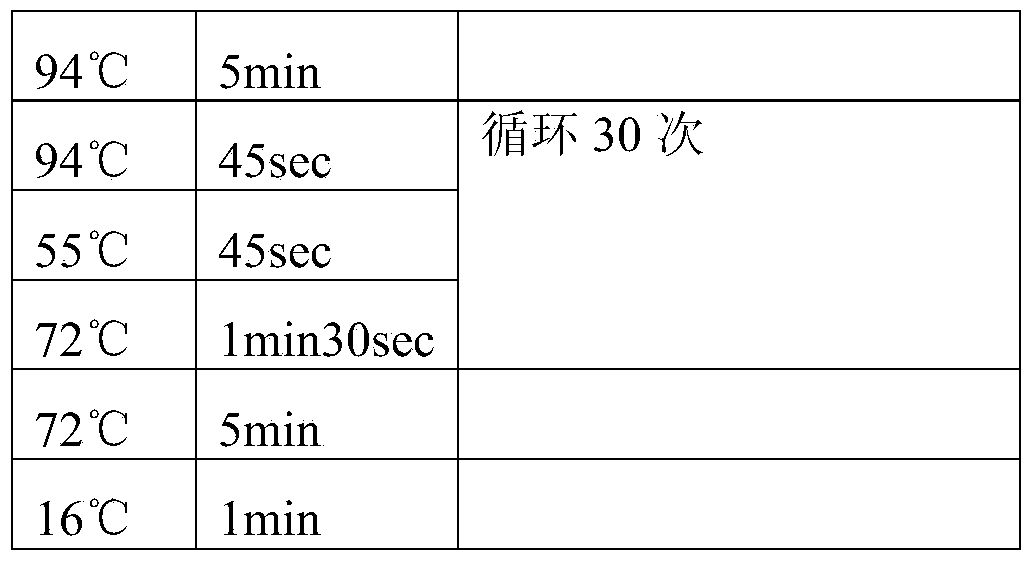Novel holomonas and method for producing tetrahydropyrimidine by novel holomonas
A Halomonas, tetrahydropyrimidine technology, applied in the field of microorganisms, can solve problems such as high requirements for equipment and operation, unsuitable for large-scale industrial production, and corrosion of fermentation equipment.
- Summary
- Abstract
- Description
- Claims
- Application Information
AI Technical Summary
Problems solved by technology
Method used
Image
Examples
Embodiment 1
[0027] Example 1: Obtaining Halomonas sp. HS-2255 (CGMCC NO.6248)
[0028] Take a 1g sample of sea mud from the coast of Taizhou, Zhejiang, and serially dilute it with sterile water, spread it on an LB plate containing different concentrations of NaCl (30-100g / L), incubate at 30°C, pick a single colony after the colony grows, and continue to separate Purify and screen until pure bacteria are obtained, cultivate them in a fermentation medium with a lower NaCl concentration (not exceeding 100g / L, optimally 75g / L), and detect the ectoine production of the strains by high-pressure liquid chromatography. Select the mutant strains obtained through mutagenesis screening against high-dose metabolic end products and structural analogs, carry out shake flask screening, measure and evaluate the ability and genetic stability of ectoine production, and obtain an excellent strain with significantly improved yield, The mutant strain for mutagenesis screening and resistance screening, and the...
Embodiment 2
[0029] Example 2: 16S rDNA amplification, sequencing and sequence alignment of Halomonas sp. HS-2255 (CGMCC NO.6248).
[0030] Collect the fresh bacteria of the strain to be tested, extract the total DNA template by the Pitcher method improved by the solution bacterial enzyme method, and use the universal primers (27F and 1495R) to amplify the 16S rDNA gene. After the PCR product is detected and purified, it is directly sequenced. Sequencing was performed by Shanghai Sangon Bioengineering Technology Co., Ltd.
[0031] The primer sequences are as follows:
[0032] a) 27F:5'-GAGAGTTTGATCCTGGCTCAG-3'(E.coli 7-27)
[0033]b) 1495R: 5'-CTACGGCTACCTTGTTACGA-3' (E.coli 1495-1514)
[0034] The 50μl PCR reaction system is as follows:
[0035] wxya 2 o
35μl
25 μM Primer 27F
1μl
25 μM Primer 1495R
1μl
10×Poly.Buffer
5μl
2.5mM dNTPs
4μl
25mM MgCl 2
3μl
DNA template
0.5ul
0.5μl
...
Embodiment 3
[0038] Example 3: Culture method of Halomonas sp. HS-2255 (CGMCC NO.6248)
[0039] Insert the strain of the present invention into the seed medium, the composition of the seed medium is: fish peptone 20g / L, glucose 20g / L, yeast extract 20g / L, NaCl 40g / L, pH7.5, and the culture temperature is 28-35°C , the shaker speed is 180-250r / min, the culture time is 24-48h, until the seed solution OD 600 The absorption value is 0.1-1.0 (with water as a reference, the seed liquid is diluted 30 times).
PUM
 Login to View More
Login to View More Abstract
Description
Claims
Application Information
 Login to View More
Login to View More - R&D
- Intellectual Property
- Life Sciences
- Materials
- Tech Scout
- Unparalleled Data Quality
- Higher Quality Content
- 60% Fewer Hallucinations
Browse by: Latest US Patents, China's latest patents, Technical Efficacy Thesaurus, Application Domain, Technology Topic, Popular Technical Reports.
© 2025 PatSnap. All rights reserved.Legal|Privacy policy|Modern Slavery Act Transparency Statement|Sitemap|About US| Contact US: help@patsnap.com



